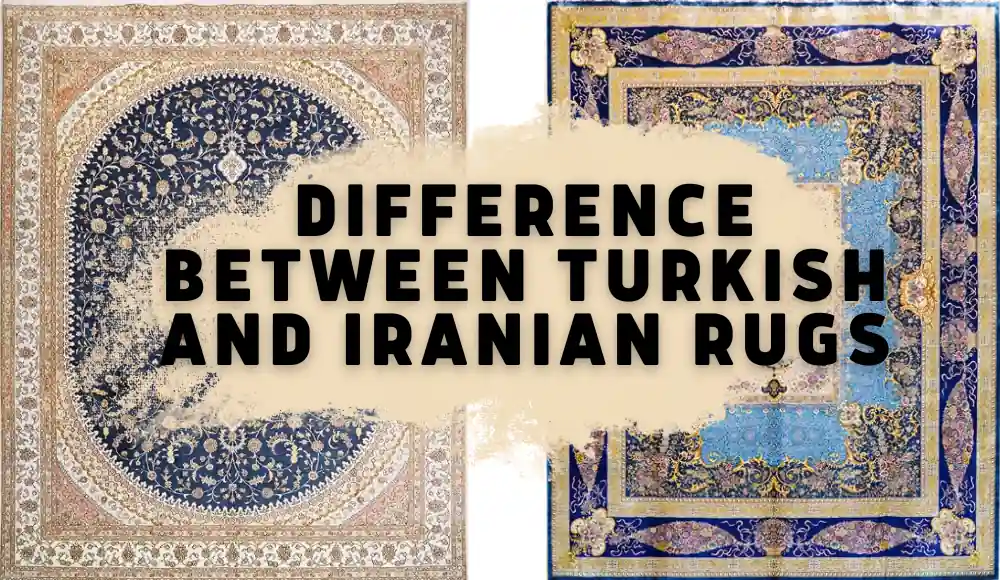Last updated on August 11th, 2023 at 01:17 am
Rugs are more than just a decorative pieces for homes; they hold great cultural significance in countries such as Turkey and Iran. Both countries have a rich history of rug making, with techniques and designs that have been passed down from generation to generation.
These rugs are not only pieces of art but also symbols of status, heritage, and tradition.
Brief Overview of the History of Rug Making in Turkey and Iran
The history of rug making in Turkey dates back to the 13th century during the Seljuk (Seljuq) Empire.
Nomadic tribes would create rugs as a form of protection from harsh weather conditions, but over time these rugs evolved into intricate works of art.
Turkish rugs are known for their bold colors, geometric patterns, and symmetrical designs.
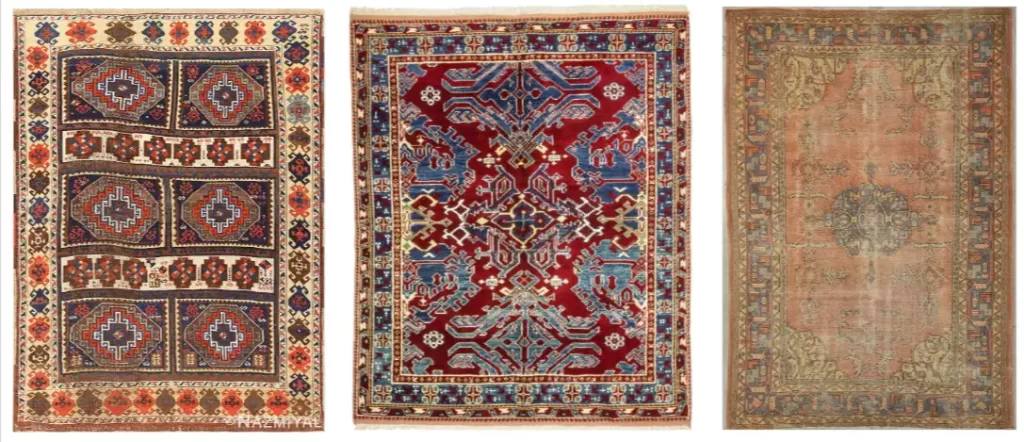
In Iran, rug making can be traced back even further to 500 BC during the time of the Achaemenid Empire.
What are Iranian rugs called? Iranian rugs are commonly known as Persian rugs. In 1935, the country of Persia officially changed its name to Iran, therefore rugs that were once referred to as Persian are now from Iran.
At one time, the territory of Persia stretched much wider than the modern borders of Iran and included the territory of modern Turkey and part of Africa. So it is worth understanding that some antique Persian rugs of the 18th century and older may well have been made by artisans from the regions of modern Turkey.
Iranian, or Persian rugs are considered some of the finest and most valuable handmade rugs in the world and are sought after for their intricate designs and high-quality craftsmanship.
Persian rugs have a rich history and cultural significance in Iran and are often used as decorative pieces in homes and public spaces.
Persian rugs are renowned worldwide for their intricate designs, rich color palettes, and detailed motifs inspired by nature. The artistry involved in Persian rug making has been recognized by UNESCO as an intangible cultural heritage.

Importance of Rugs in Turkish and Iranian Culture
Rugs play a significant role in both Turkish and Iranian cultures.
In Turkey, owning a handmade rug is seen as a symbol of wealth and social status. It is customary to offer guests tea on top of a handmade rug as a sign of respect and hospitality.
In Iran, carpets hold immense value as they are seen as family heirlooms that can be passed down through generations.
These rugs are more than just floor coverings; they represent centuries-old customs deeply ingrained in Turkish and Iranian society. By understanding the history behind these works of art, we can appreciate the intricate details and artistry involved in their creation.
Differences in Materials Used
Types of Wool Used in Turkish and Iranian Rugs
One of the most significant differences between Turkish and Iranian rugs is the type of wool used to make them.
Turkish rugs are typically made with coarser, thicker wool that is more durable and can withstand heavy foot traffic. This wool comes from the long-haired sheep that are raised in Turkey’s highlands.
The wool is sheared twice a year, which ensures that it remains thick and strong.
Iranian rugs, on the other hand, are made with a finer grade of wool that comes from sheep raised in the cooler mountainous regions of Iran.
This wool is softer than the wool used in Turkish rugs and produces a smoother texture. It also takes dye more easily, which allows for more intricate color patterns.
Silk vs Cotton Foundation in Turkish and Iranian Rugs
Another difference between Turkish and Iranian rugs lies in their foundation material. The foundation material provides structure to the rug upon which the knots are tied.
In Turkish rugs, cotton is typically used as a foundation material. Cotton provides a firm base for knotting while also allowing for air circulation through the rug.
In contrast, silk is often used as a foundation material for Iranian rugs due to its strength and elasticity. Silk fibers allow for finer knots to be tied, resulting in more intricate patterns on the rug’s surface.
However, using silk as a foundation material makes these rugs less durable than those made with cotton foundations.
Overall, these differences add unique characteristics to each type of rug and make them distinctively different from one another.
Differences in Design
Geometric vs Floral Designs in Turkish and Iranian Rugs
One of the main differences between Turkish and Iranian rugs is the design.
Turkish rugs are known for their geometric designs, which often feature bold, angular shapes and sharp lines. This reflects the influence of Islamic art on Turkish rug-making, as well as the nomadic lifestyle of many Turkish people who used rugs as both floor coverings and wall hangings.
In contrast, Iranian rugs are known for their intricate floral designs, which often incorporate delicate petals and leaves to create more organic patterns. This reflects the influence of Persian culture on rug-making in Iran, as well as the use of carpets for more formal settings such as palaces and mosques.
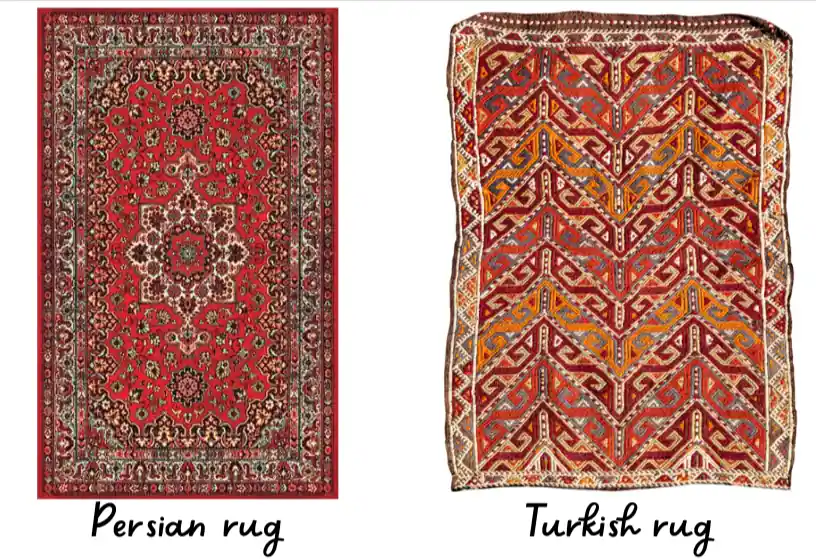
Use of Color and Motifs Unique to Each Country
In addition to differences in design style, there are also notable variations in color palettes and motifs used by Turkish and Iranian rug-makers.
Turkish rugs tend to use bold primary colors such as red, blue, yellow, green, and black. These colors are often combined in unique ways to create striking visual effects that highlight the geometric shapes within the design.
Vintage Turkish rug runner
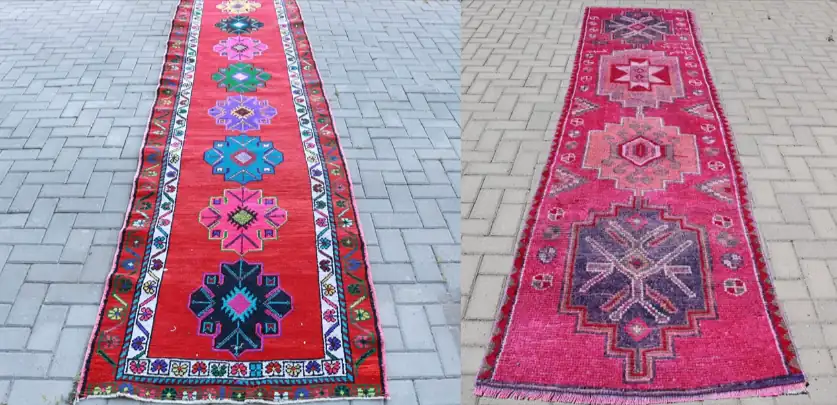
In comparison, Iranian rugs tend to use a wider variety of colors including softer tones such as pink or lavender that complement the floral motifs within their designs. Another key difference is the use of motifs unique to each country.
For example, traditional Turkish rug designs may feature symbols such as stars or stylized animal figures that reflect their nomadic heritage while Iranian rug designs may include more intricate medallions or arabesque patterns that reflect an affinity for formal symmetry.
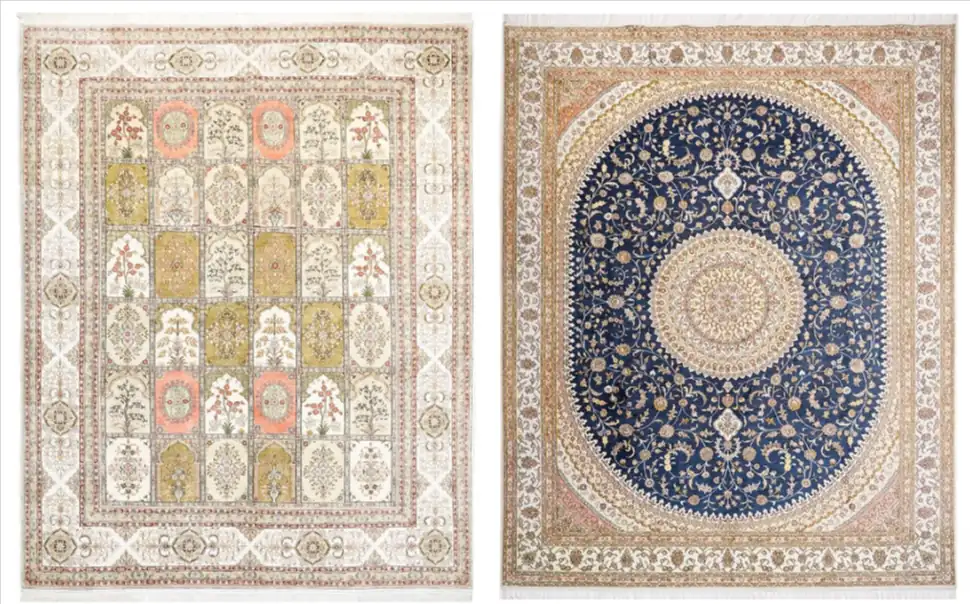
These unique features help distinguish each country’s respective artistic traditions while also adding a touch of cultural significance to these beautiful works of art.
Differences in Weaving Techniques
Knotting techniques used by Turkish weavers
When it comes to Turkish rug making, the most commonly used knotting technique is the Turkish or Ghiordes knot. This particular type of knot is symmetrical and involves looping the yarn twice around two adjacent warp threads, then pulling it through the middle to form a small knot.
This technique results in a durable, tightly-woven rug that can withstand heavy foot traffic.
Knotting techniques used by Iranian weavers
Iranian rug making typically involves two main types of knots: the asymmetric or Persian knot (also known as Senneh). The Persian knot is asymmetrical and involves wrapping yarn around one warp thread before pulling it through to form a diagonal loop on one side of the thread.
This technique allows for more flexibility in design but yields a somewhat looser weave.
Symmetric knots are mainly used in Gabbeh carpets because they need less time than asymmetric knots which require more expertise and care during the weaving process.
Persian Gabbeh rugs

Regional Variations
Distinct Styles from Different Regions within Turkey
When it comes to Turkish rugs, there are many regional variations that make each one unique.
For example, the rugs made in the region of Konya tend to be more geometric in design and feature bold colors like red, blue, and yellow.
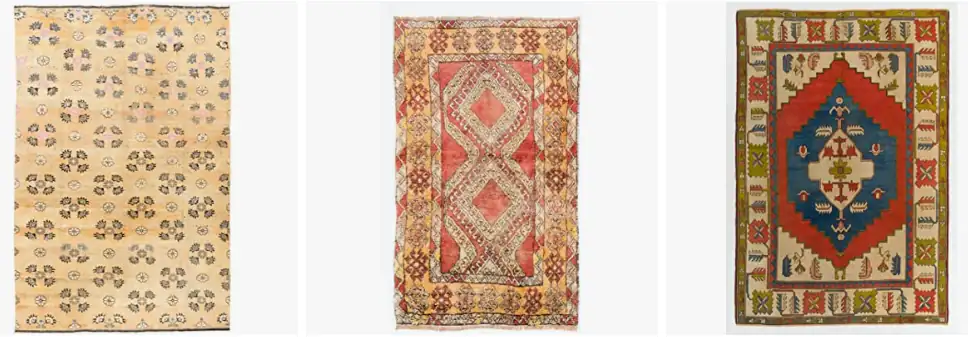
In contrast, the rugs made in central Anatolia are known for their delicate floral designs and soft pastel colors.
Another notable style of Turkish rug is the Hereke rug, which is made in a small town near Istanbul.
Difference between Qum Persian rug and Hereke Turkish rug
—
These rugs are incredibly detailed and often feature intricate patterns woven with silk threads. They are highly prized by collectors due to their beauty and rarity.
Distinct Styles from Different Regions within Iran
Like Turkish rugs, Iranian rugs also have distinct styles based on the region where they were made.
One of the most famous styles is the Tabriz rug, which is made in a city in northwestern Iran. Tabriz rugs are known for their intricate floral designs and use of bright colors like red, blue, and green.
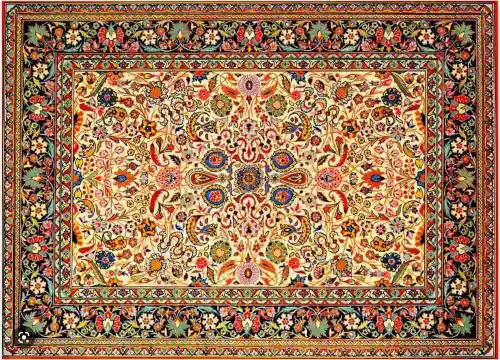
Another notable style of Iranian rug is the Qashqai rug, which is made by nomadic tribes living in southern Iran. These rugs often feature bold geometric designs and bright colors like orange and pink.
They are highly valued for their unique patterns and rustic charm. Overall, both Turkish and Iranian rugs have a rich history of regional variation that makes each one a work of art unto itself.
Cultural Significance
Role of Rugs as a Status Symbol in Turkey
In Turkey, owning a rug is more than just having something to cover your floors with. It’s a symbol of wealth and status. Historically, the quality and quantity of rugs owned by a family was an indicator of their social standing.
This cultural significance still holds true today, especially in rural areas where owning a hand-knotted rug is seen as an investment in one’s future.
Turkish rugs are highly sought after for their durability and intricate designs, which can take months or even years to create.
The art form has been passed down through generations, and skilled weavers are highly respected members of the community.
Role of Rugs as a Form of Artistic Expression in Iran
In Iran, rug-making is considered an art form that has been perfected over centuries.
The intricate designs and patterns found on Persian rugs are not just decorative; they tell stories and reflect the cultural heritage of the region. Each rug can take months or even years to create, with every knot being tied by hand.
Rug-making is deeply ingrained in Iranian culture, with many families passing down the craft from generation to generation. For many weavers, it’s not just about creating something beautiful; it’s about preserving their heritage and showcasing their creativity.
Persian rugs are often considered investments because they hold their value over time due to the craftsmanship involved in creating them.
Owning one can also be seen as a way to appreciate this unique art form while supporting local artisans who carry on this tradition.
Conclusion
Summary of Key Differences Between Turkish and Iranian Rugs
Both Turkish and Iranian rugs are gorgeous works of art that have been crafted with incredible care and attention to detail. However, there are some key differences between the two styles that can help distinguish them from one another.
One major difference is in the materials used – while Turkish rugs often use wool or a wool-silk blend, Iranian rugs frequently incorporate silk into their designs.
Additionally, Turkish rugs tend to feature more geometric or angular designs, while Iranian rugs often showcase intricate floral patterns. Another key difference lies in the weaving techniques themselves.
Importance of Preserving the Artistry and Craftsmanship Involved with Rug Making
It is essential that we continue to value and preserve the artistry involved with rug making – not just for decorative purposes but also for their historical significance. Rugs play an important role in both Turkish and Iranian culture as status symbols as well as forms of artistic expression.
By supporting artisans who create these beautiful pieces by hand rather than opting for machine-made alternatives, we can ensure that ancient weaving techniques will continue to be passed down through generations.
In doing so, we preserve not only a rich cultural heritage but also provide economic opportunities for skilled craftspeople.
Whether you prefer the bold geometric designs of a Turkish rug or the intricate florals found on an Iranian rug, it is clear that these works of art are treasures worth cherishing.
By valuing their unique qualities and supporting the craftsmen who create them by hand using traditional methods passed down through generations, we ensure that this important art form will continue to thrive for many years to come.
